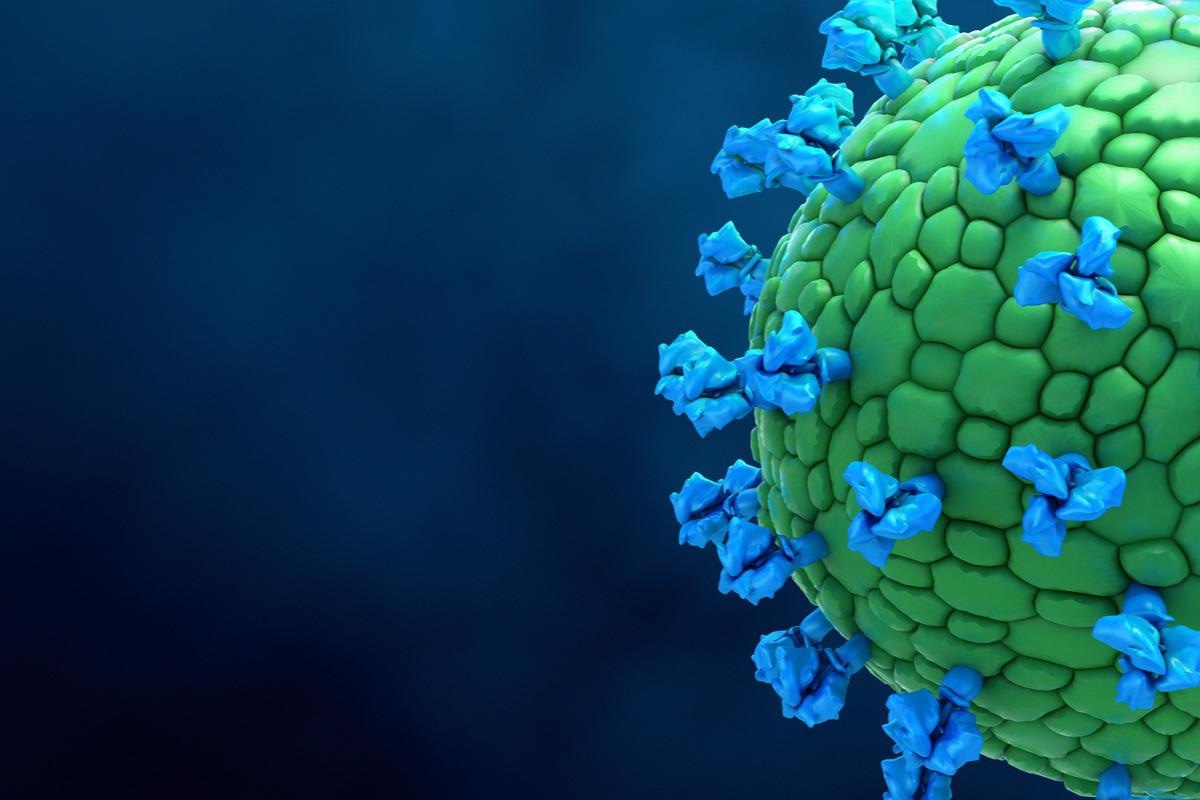A recent article posted to the Research Square* preprint server depicted plant-based biologically active antiviral agents effective against the severe acute respiratory syndrome coronavirus 2 (SARS-CoV-2) infection.
 Study: Identification of Plant-Based Drug-like Molecules as Potential Inhibitors against hACE2 and S-RBD of SARS-CoV-2 using Multi-step Molecular Docking and Dynamic Simulation Approach. Image Credit: Design_Cells/Shutterstock
Study: Identification of Plant-Based Drug-like Molecules as Potential Inhibitors against hACE2 and S-RBD of SARS-CoV-2 using Multi-step Molecular Docking and Dynamic Simulation Approach. Image Credit: Design_Cells/Shutterstock

 *Important notice: Research Square publishes preliminary scientific reports that are not peer-reviewed and, therefore, should not be regarded as conclusive, guide clinical practice/health-related behavior, or treated as established information.
*Important notice: Research Square publishes preliminary scientific reports that are not peer-reviewed and, therefore, should not be regarded as conclusive, guide clinical practice/health-related behavior, or treated as established information.
Background
The development of antiviral agents with significant effectiveness against the subsequently emerging SARS-CoV-2 lineages is of paramount importance to protect global public health during the ongoing coronavirus disease 2019 (COVID-19) pandemic.
Phytochemicals or plant-based bioactive compounds exhibit potential immunomodulatory and therapeutic effects against multiple SARS-CoV-2 targets. Besides, plant-based bioactive molecules have intrinsic wide-spectrum biological capabilities such as antiviral, antioxidant, and anti-inflammatory capabilities with few or no side effects.
SARS-COV-2 infection begins in humans following the recognition and adherence of the viral spike (S) protein's receptor-binding domain (RBD) to the human angiotensin-converting enzyme 2 (hACE2) receptors on the host cell surface. Moreover, the number of ACE2-binding residues is higher in SARS-CoV-2 due to significant mutations, especially in its RBDs, than in SARS-CoV. Therefore, organs such as the heart, respiratory system, liver, kidney, and intestine are at a high risk of SARS-CoV-2 infection.
A better understanding of the underpinning pathways of interaction between SARS-CoV-2 and host cell receptors that hinder the virus-cell connection is a potential strategy for COVID-19 management.
About the study
In the present investigation, the researchers conducted an in-silico analysis of approximately 1000 phytochemicals against two SARS-CoV-2 targets, i.e., hACE2 receptors and viral RBD protein, employing a multi-step molecular docking technique. Steered molecular dynamics (SMD) simulations of the top five compounds derived using the Glide Xtra precision (Glide-XP) docking score were conducted for binding force calculation.
Several criteria, such as drug likeliness; absorption, distribution, metabolism, excretion, and toxicity (ADMET) analysis; pharmacokinetics; pharmacodynamics; inhibition constant (pKi); ligand efficiency (LE); the probability to be active (Pa); and probability to be inactive (Pi), were taken into account to obtain the highest efficacy of the therapeutic target with no or minimal adverse effects.
The descriptors such as drug-likeliness, molecular weight, hydrogen (H)-bond donor/acceptor, AlogP, polar surface area, rotatable bonds, colorectal adenocarcinoma 2 (Caco2) cells, human intestinal absorption, human oral bioavailability, blood-brain barrier, plasma protein binding, Ames mutagenesis, the number of oxygen and nitrogen atoms and water solubility were predicted for the compounds.
These steps led to the identification of the best three ligands with superior work and force. Subsequently, the hit molecules were subjected to 100 ns molecular dynamics simulations and molecular mechanics-Poisson Boltzmann surface area (MM-PBSA) binding free energy assessments.
Results
The study results demonstrated five promising phytochemicals for both the SARS-CoV-2 RBD protein and hACE2 receptors: ascorbic acid, palasitrin, isoorientin, and rosavin, and eriocitrin for ACE2; and procyanidin C1, cinnamtannin B1, tannic acid, terflavin A, and isoskimmiwallin for the SARS-CoV-2 RBD protein.
The five compounds demonstrated a significant capacity to attach to the receptor-binding region of the targets, with high binding energy, substantial docking scores, close contacts, and serve as a potential SAR-CoV-2 infection inhibitor by blocking the interaction of ACE2 receptor and viral RBD.
Additional analyses led to the identification of the three best hits for both targets: palasitrin, rosavin, isoorientin; and isoskimmiwallin, terflavin A, cinnamtannin B1 for ACE2 and RBD, respectively. The binding free energy of the identified hit compounds for ACE2 and RBD ranged from -9.01 to -11.982 kcal/mol and -7.782 to -8.51 kcal/mol, respectively.
In the case of the ACE2 receptor, the highest force and internal work values were exhibited by isoorientin, the second-highest force value by rosavin, and the second-highest work value by palasitrin. Further, against the SARS-CoV-2 RBD protein, the highest work and the second-highest force values were demonstrated by isoSkimmiwallin, the second-highest work value by terflavin A, and the highest force value by cinnamtannin. The Pa and Pi values of the lead compounds varied between 0,093 and 0,725 when Pi was less than Pa, indicating their better druggability against both the SARS-CoV-2 targets.
Conclusions
The study findings depicted five potent phyto-compounds against the SARS-CoV-2 RBD protein and hACE2 receptors. Furthermore, additional evaluations, including the drug likeliness analyses, revealed three lead compounds for the RBD (terflavin A, isoskimmiwallin, cinnamtannin B1) and ACE2 (palasitrin, isoorientin, rosavin) targets. The three hit compounds were non-toxic and harbored better pharmacokinetics and good inhibitory capacity under physiological circumstances. As a result, the phyto-compounds could be potential COVID-19 antiviral medicines.
The authors stated that before contemplating the phyto-molecules as therapeutic interventions for SARS-CoV-2 infection, pre-clinical optimization of them via in-vitro or in-vivo experimental trials is required.
Overall, the present work revealed solid evidence for the antiviral therapeutic effectiveness of plant-based bioactive compounds that can disrupt the SARS-CoV-2-host cell contact and therefore be used to treat and manage COVID-19.

 *Important notice: Research Square publishes preliminary scientific reports that are not peer-reviewed and, therefore, should not be regarded as conclusive, guide clinical practice/health-related behavior, or treated as established information.
*Important notice: Research Square publishes preliminary scientific reports that are not peer-reviewed and, therefore, should not be regarded as conclusive, guide clinical practice/health-related behavior, or treated as established information.